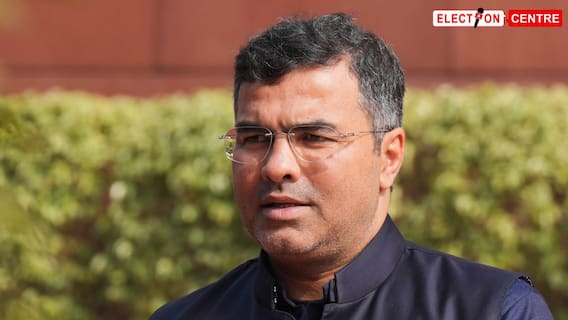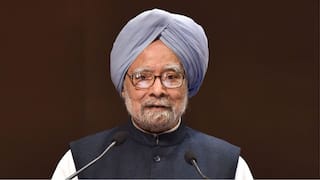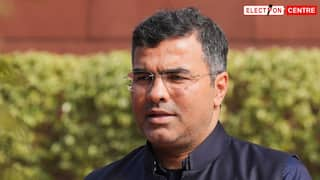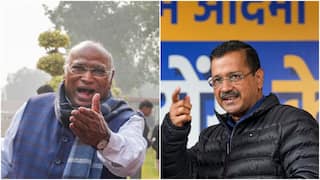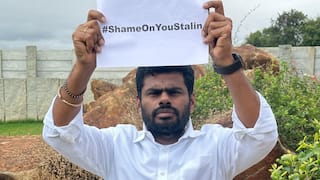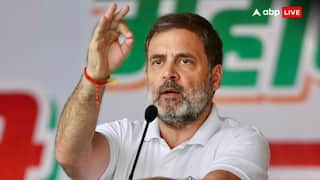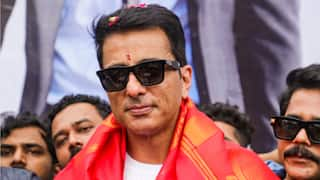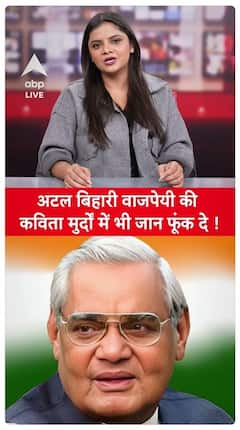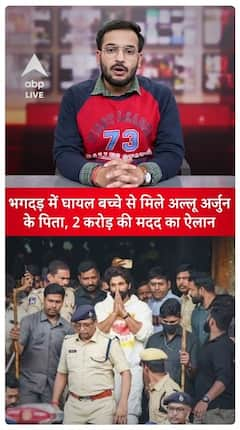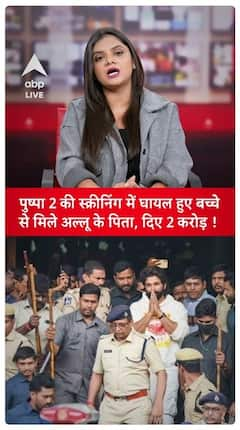Birendra Krishna Bhadra, The Voice Invoking Goddess Durga On Mahalaya For Nearly 90 Years Now
Most Bengali households wake up at the crack of dawn on Mahalaya to welcome Goddess Durga by playing the Mahishasuramardini composition on radio

New Delhi: The year was 1931, when the radio listeners of Bengal were first greeted by the classic composition, ‘Mahishasuramardini’, setting the tone for Durga Puja festivities.
The ritual has since continued, and this is the 90th year of the 90-minute masterpiece created by Bani Kumar and played on the dawn of Mahalaya every year. It is still popular with people from all walks of life — irrespective of age, gender, political orientation.
The composition comprises a narration depicting the creation of Goddess Durga for the annihilation of Mahishasura, the buffalo demon who was believed to have the divine blessing that he could not be killed by a man or a god.
Also part of the recital are 20 devotional songs in Bangla, sung by top artistes of the time and set to tune by legendary music composer Pankaj Mullick.
But what makes the recital come alive is the spirited Chandipath in Sanskrit in the rich baritone of Birendra Krishna Bhadra, a name that is almost synonymous to Mahalaya as far as Bengal and Bengalis are concerned.
Who Was Birendra Krishna Bhadra?
Born in Ahiritola locality of north Kolkata in 1905, Bhadra had learnt Sanskrit from his grandmother, according to reports.
It is said that his father Kali Krishna Bhadra, to whom the British had awarded the title of “Roy Bahadur” in 1927, was a linguist who could speak 14 languages. Bhadra’s mother Sarala Bala Devi was the daughter of Kalicharan Ghosh, a lawyer.
Bhadra also studied law, in Calcutta University, after his graduation from Scottish Church College.
But it was music where he found his calling.
He was able to land a job in All India Radio in Kolkata when Nripendranath Majumdar was the station director. At AIR, Bhadra handled the drama department, writing plays, and even acting in them.
Bhadra was also the editor of the radio station’s own magazine.
And after Bani Kumar and Pankaj Mullick created ‘Mahishasuramardini’, directed by Majumdar, the legendary radio voice became part of the timeless classic that has retained its charm to date.
As the story goes, while the original composition was created in 1931, the first time it was broadcast on Mahalaya and with Bhadra as the narrator was on 21 October 1937. It used to be aired on Mahashasthi prior to that.
Bhadra was a celebrated playwright and director too. ‘Mess No. 49’ remains one of his memorable works.
He also directed Bimal Mitra’s ‘Saheb Bibi Golam’ for a theatre production.
The Story Of ‘Mahishasuramardini’ Recital
Bhadra’s popularity as the narrator in the Mahishasuramardini recital grew exponentially, so much so that it could not even be imagined that anyone other than him could do the Chandipath.
In its initial years, the rendition used to be a live programme. Artistes would reach the radio station past midnight for the recording.
The singers included Dwijen Mukhopadhyay, Pratima Banerjee, Shyamal Mitra, Sandhya Mukhopadhyay, Manabendra Mukhopadhyay, Arati Mukhopadhya, Supriti Ghosh, Bimal Bhushan, Utpala Sen, Tarun Banerjee, Krishna Dasgupta, Sumitra Sen, Ashima Bhattacharya, Shipra Bose and Pankaj Mallick.
In interviews to different publications later, many of these artistes would reminisce how they prepared, carried out rehearsals and waited for the big day every year.
It is said the studio would be decorated with flowers and incense sticks would be lit on the day of the performance. The artistes would come after taking a bath, as one would do when going to a temple. Women artistes wore the traditional Bengali attire of a white saree with red borders, and men would come in dhoti and kurta. The performance would start after conch shells were blown three times, creating an puja-like atmosphere for everyone, including the artistes and the listeners.
After the first song of “Ya Chandi, Madhukaitabhaadi…”, Bhadra would start the narration with the much loved words, “Aswiner sarada praate…”, going on to keep the audience spellbound, year after year.
The rendition was recorded in 1966 by the same set of artistes, and that very version is played till date.
Bhadra and Mahalaya
That Bhadra was popular was known to all. But the extent of his popularity was known only when AIR thought the narration and Chandipath could be done by someone else.
In 1976, they got none other than Uttam Kumar, the ‘Mahanayak’ of Bengali films. The superstar was a trained singer too and the organisers may have thought his massive popularity among the masses would add more value and make the composition even bigger.
They even changed the name of the programme from ‘Mahishasuramardini’ to ‘Durga Durgatiharini’, and the composition was changed too and recorded by different artistes.
According to some accounts, a non-Brahmin Bhadra chanting Devi stotras had not gone down well with some and there had been pressure on AIR to replace him.
But the listeners, the ultimate jurors, rejected the actor so loved by them in his new role.
Bhadra was brought back, and Aakashbani went back to the original composition.
A film by the name of Mahalaya, made in 2018, focussed on this particular episode and detailed how the experiment was carried out and why it failed.
Bhadra passed away on 3 November 1991, at the age of 86. But his immortal voice continues to reach and rule hearts, through ‘Mahisharuramardini’ on Mahalaya and always.
Trending News
Top Headlines






